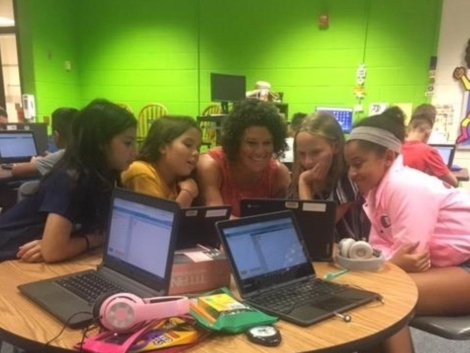
Conducting Research with Make-a-Map – A CBE Aha! Moment 8.19
Posted by cemignano on
We’re excited to share our August CBE of the Month’s Aha! Moment. We welcome back Julie Kuzma to share her reflection on past teaching practices and how BrainPOP has been used to improve upon them. Reflection is an important practice for all and we hope sharing these moments will inspire you to do the same!
1) Tell us your BrainPOP “Aha! Moment” from the certification process. What specific use or application of BrainPOP excited you during this course? How did it change your expectation for using BrainPOP in your teaching practice?
Before the certification process, I only used BrainPOP for videos and quizzes. Not only did I learn about the different parts of the software but certification allowed me to dive in and act as a student in completing the requirements. While this was happening, my mind was spinning with ways I could utilize BrainPOP in my computer lab/Makerspace classroom, as well as how teachers in my building could use the tool.
2) What is a specific lesson or unit you’ve taught in the past that you can re-formulate to bring in the new tools, features, or content you discovered through the CBE process?
In 2nd and 3rd grade, students begin research projects on new topics and teaching this skill can be overwhelming. In the past we would collect books from the library or use some online resources to gather information. Each student, or group of students, would receive a worksheet that would ask for specific items. They would locate that information and write it down on paper. As long as the paper was collected each day to be stored in a safe place, this was a great idea. There were times the information would be misplaced and the students would need to write down what they remembered or start over.
3) How will you integrate BrainPOP’s new features and tools to replace what you’ve done in the past?
Practicing that same skill, we found BrainPOP to be a great resource for our research. Sharing the Make-a-Map option with our learners, they are now able to create a web of information that will lead them to the final project. Having the map contents like vocabulary, images and video clips embedded in the program takes away a piece of anxiety that can be associated with a new skill. Make-a-Map also allows for differentiation as students can all reach the same goal but have different requirements to achieve it. This allows students to complete the assignment in a way that is meaningful to them.














